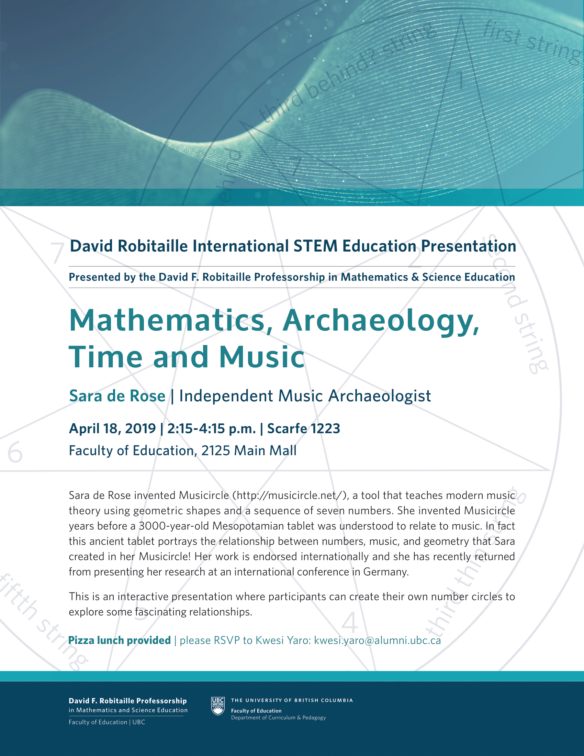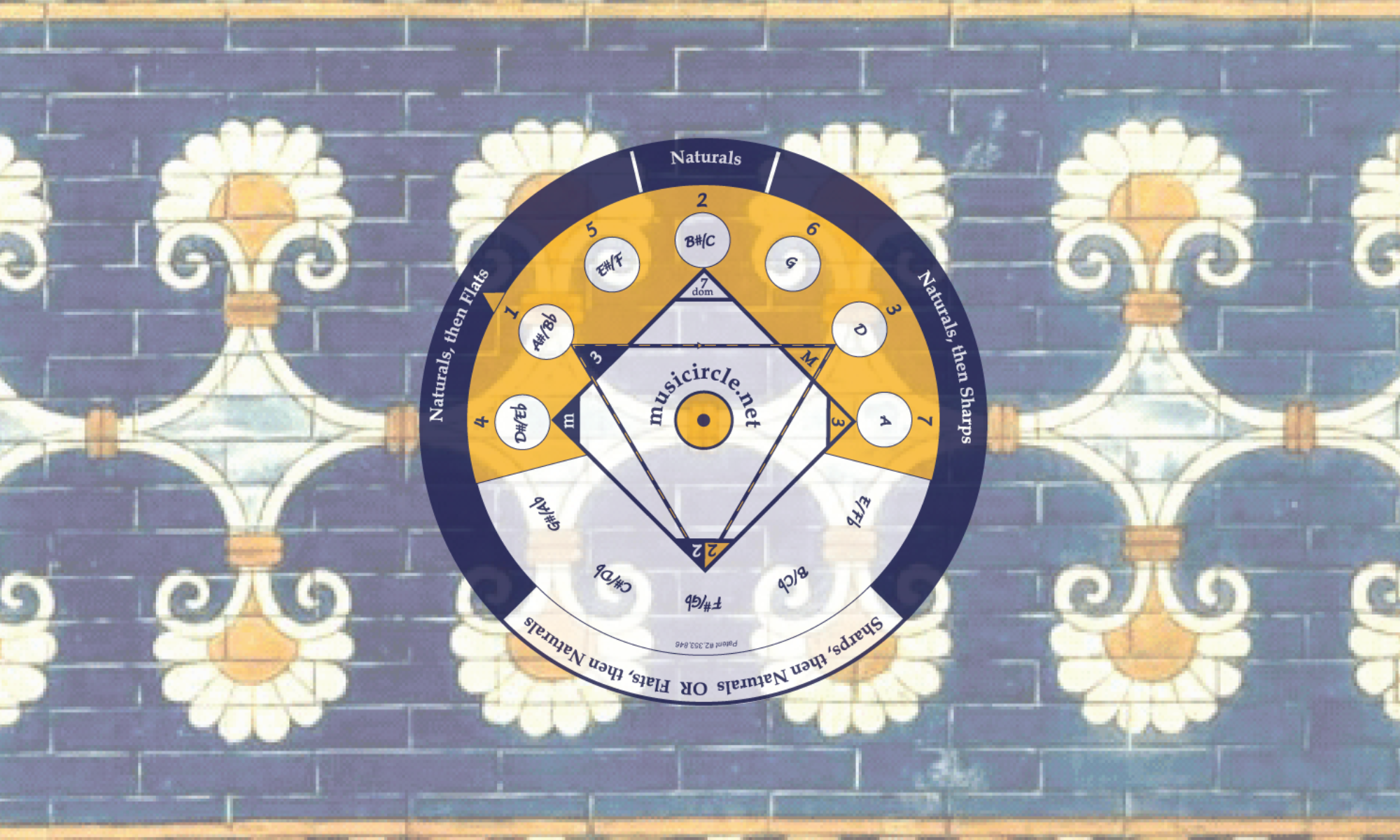This is a 90-minute curriculum unit designed for history of music or history of mathematics classes. It can also be presented, as a special event, for faculty – for example, as a STEM Education Presentation (see University of British Columbia event below).

Using simple mathematics, participants derive the heptagram on Mesopotamian tablet CBS 1766. In so doing, they explore, through hands-on experience, the ancient mathematical origins of modern music theory.
Participants learn why the fret board of a guitar looks the way it does and why the octave is divided into twelve notes. They also learn about the origin of the seven-note major scale and the five-note pentatonic scale.

Participants learn about the sequence 4,1,5,2,6,3,7 – a sequence that was integral to the Mesopotamian tonal system.

They learn that this sequence of numbers is important not only in understanding modern-day music theory, but also in understanding the importance of music in ancient cosmological tradition – for, in fact, the musical sequence 4,1,5,2,6,3,7 explains the order of the days of the week.
For more information, click here.
